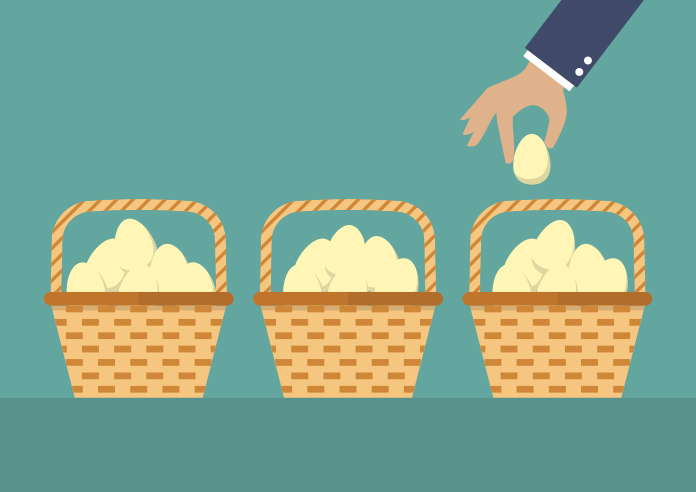Don’t call it a comeback… at least not yet.
After a rough first half of the year, July provided a breather for financial markets. Year to date losses have not been recouped, but we saw the highest monthly increase for the S&P 500 since November 2020 as the Index gained 9.11%. Other major indices followed suit, with the Nasdaq rising by 12.35% and the Dow Jones Industrial Average closing up 6.71%. This respite was accompanied by declining oil prices (resulting in lower prices at the pump).
Overseas, developed international markets also saw some relief, rising 5.29%. This comes even as Russia has further cut gas exports to Europe, increasing geopolitical tensions abroad. Meanwhile, emerging markets continue to face obstacles, falling 0.79% as a result of slowing global growth and broad central bank tightening.
In the fixed-income markets, interest rates fell and bonds responded positively. The aggregate bond market grew by 2.38%, which was the most it has risen in a single month in almost three years. Coincidentally, the 10-Year Treasury yield dropped from 2.98% down to 2.67%.
July seemed to catch a case of “bad news is good news” as inflation ran hotter than expected and GDP contracted for the second consecutive quarter. These data releases, among others, caused investors to back off forecasts of more aggressive Fed rate hikes, which was a boon for many asset classes during the month.
While this does provide hope for the future, many experts worry we may not be out of the woods just yet. There have been differing opinions on whether or not we are currently in a recession, whether supply chain issues are subsiding, and if inflation will continue to be a problem. At this point, the only constants seem to be volatility and uncertainty.
Starting from the end of World War II until now, there has never been back-to-back quarters with negative GDP in which a recession hasn’t eventually been announced. However, squabbling about what to call the current environment is of little value. It’s more important to stay focused on the long-term financial plan that you have in place, which will help guide you through any further market fluctuations if the road remains rocky.
Trips to space to require chaperones?
NASA announced any private expeditions to the International Space Station must be accompanied by a former NASA astronaut. This comes after the first private visit back in April of this year, which included previous astronaut Michael López-Alegría, who proved to be valuable.
Currently, the individuals making these flights are those who can cover the huge expense—estimated to be in the tens of millions per person—and tend to have little to no experience. It makes sense then for the government to implement this rule, as “a former NASA astronaut provides experienced guidance for the private astronauts during pre-flight preparation through mission execution.”
This only applies to flights that plan to dock at ISS right now though. It remains to be seen what additional laws and guidelines may be put into effect as private space tourism continues to grow and (possibly) become more affordable.
Many folks who have received raises recently don’t fell like they have.
According to the Bureau of Labor Statistics’ Employment Cost Index, wages increased 1.4% in the second quarter and 5.3% over the last 12 months ending in June, the highest increase since 1983. News that should be exciting and encouraging is actually a disappointment when accounting for inflation though. Adjusting for rising prices, wages actually fell 3.5%.
While wages are climbing, it’s proven to not be fast enough as any gains are being eradicated by high price growth. Some argue that the increase in wages actually further contributes to inflation though. This theory, known as wage-push inflation, says when employers pay their employees more, they also raise prices for the consumer in order to cover those additional costs.
As the Fed has continued to hike rates, the hope is a tighter monetary policy will reign in some of this price growth to help consumers.
Broad Market Returns
| Asset Class | 1 Month | 3 Month | YTD | 1 Year |
| S&P 500 (VOO) | 9.20% | 0.43% | -12.59% | -4.68% |
| NASDAQ (QQQ) | 12.55% | 0.90% | -20.46% | -12.99% |
| Large Cap Growth (VUG) | 13.04% | 0.70% | -21.29% | -14.43% |
| Large Cap Value (VTV) | 5.06% | -0.90% | -4.71% | 2.19% |
| Small Cap Growth (VBK) | 11.71% | -0.18% | -21.80% | -22.79% |
| Small Cap Value (VBR) | 9.83% | 0.33% | -7.23% | -1.83% |
| Developed International (VEA) | 5.29% | -2.78% | -14.61% | -14.16% |
| Emerging Markets (VWO) | -0.79% | -4.17% | -15.59% | -16.75% |
| REITs (VNQ) | 8.62% | -4.19% | -13.68% | -4.32% |
| Aggregate Bonds (BND) | 2.38% | 1.51% | -8.22% | -9.35% |
| Corporate Bonds (VCIT) | 3.92% | 2.41% | -9.41% | -11.02% |
| High Yield Bonds (JNK) | 6.78% | 0.09% | -8.98% | -8.06% |
| Long Term Treasuries (VGLT) | 2.62% | -0.82% | -18.78% | -19.25% |
| International Bonds (BNDX) | 3.22% | 0.76% | -6.95% | -8.47% |
Market Health Indicator
The Market Health Indicator (MHI) measures market health on a scale of 0 – 100, analyzing various market segments such as economics, technicals, and volatility. Higher scores indicate healthier market conditions.

Fun Facts
- Get your sweatpants ready – August 10 is National Lazy Day.
- A chef’s hat, called a toque blanche, has 100 pleats to represent the 100 different ways to cook an egg.
- According to the American Public Power Association (APPA – not to be confused with ABBA) squirrels are the most frequent cause of power outages in the US.
- While they may look light and fluffy, researchers have determined a single cloud can weigh more than 1 million pounds (based on water density and volume).
– The Aspire Wealth Team


